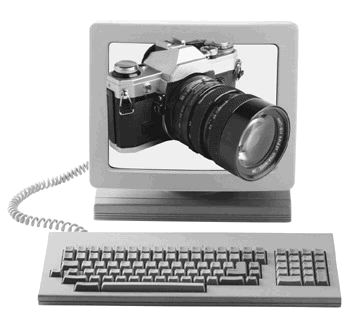
Features
Financial Reports & Markets
Making the most of photographs in files
December 1, 2002 By Pulp & Paper Canada

The techniques for including visuals are buried rather deeply in instructions and spread across the “help” screens of several programs. There is no need today to FedEx the hard copy of most documents,…
The techniques for including visuals are buried rather deeply in instructions and spread across the “help” screens of several programs. There is no need today to FedEx the hard copy of most documents, or to leave the reader with half a dozen files to piece together. When a report is in one straightforward file, it can readily be e-mailed, reviewed on-screen or printed, which is convenient for co-authors reviewing drafts as well as end-users.
Although most users have the tools already installed in their computers for good but straightforward graphic work, many are not aware of this or are blocked by obstacles that are relatively easy to overcome.
Manipulating photos
After taking a digital picture or scanning a hard copy, it is normally necessary to edit it before it is ready for insertion in a document. While the pros use Adobe PhotoShop or other advanced photo editing software, most users are better off with the elementary but fast Microsoft Photo Editor included with Windows. Many digital cameras and scanners are shipped with a low-end photo editing software, which may be adequate, but I have not seen one I like yet. Most tuck the photographs away in an “album” that is not easy to find with other software.
First, you have to find Microsoft Photo Editor, since it is not always installed with Windows. If it is not on you computer, insert your original Windows CD, and use the “add/remove programs” feature of the Control Panel. You should find Photo Editor on the CD, and it will install automatically after you respond to the on-screen prompts.
When you load the pictures into the computer from the scanner or camera, save them with meaningful names, (not the numbers that are generated by the computer). Probably best to save them in the same folder as the documents you are working with.
With Photo Editor, first crop the junk off the edges, then play with the light balance for best effect. The built in help system describes the procedures. It is normally best to take (or scan) photographs with the highest resolution available and to save the file in this resolution. However, for most uses, this is excessive and leads to VERY fat files, which slow up the computer and can be refused by some e-mail systems.
By clicking on “image size”, you will see how many pixels the photo contains, at which point there is the option to change the number. Usually for screen display, 800 pixels wide is plenty, and less may be appropriate. I always retain the highest resolution photo and save the reduced one under a new name. For example, if I have a high resolution file called “Washer.jpg” I would save the version reduced to 800 pixels wide as “Washer800.jpg”.
Inserting photos in documents
The easiest way to insert a photo in a Word or similar file is to simply use the “Edit Copy” command in the photo editing software, then click where you want the photo to be, then click on “Edit Paste”.
However, this often produces gigantic files. It is much better to start from the world processor, and use the “Insert Picture from file” command.
If the picture that appears in your word processing files is too large or too small, it is easy to grab a corner of the picture with the mouse and drag it to the size you want. This may produce a large file and/or a fuzzy picture. Much better to return to your original photo, and adjust the number of pixels or crop it, the repeat the “Insert Picture” commands.
The impact of using the best insertion procedure on file size can be spectacular. A ten slide PowerPoint presentation I made with the “cut and paste” approach for five photographs required 11 Megabytes, and my client’s Email system refused it. I deleted the photographs, and inserted them with the “Insert Picture” commands and the file size was only 300 kilobytes. Much more manageable, and my computer responded more rapidly when editing the smaller file.
While you can crop pictures inside Word, PowerPoint or other programs that produce your finished document, it is normally more efficient to do so in the photo editing software before inserting the graphic in the word processing file.
Drawings and graphs
There are many ways of inserting AutoCAD drawings in WORD files. The procedures are in the help menus, but no clues are offered on which works best. I have had best results by using AutoCAD’s “Export” command and selecting “Encapsulated Postscript” for the file format.
In contrast to the foregoing advice, I have found that graphs from Excel can be “cut and pasted” into other software without generating giant files. I hold the “Shift” key down, to activate the “Copy Picture” option under the “Edit” menu.
It is very easy to just “Cut and Paste” a photograph into an e-mail, but much less space is required if the photographs is sent as an attached file. In on example I just tried, the difference was from 200 kb to 1,300 kb.
Other software
The foregoing mentions mostly the incorporation of photographs and drawings in Word files, but is applicable to PowerPoint, FrontPage and most of the current competitive software.
If you wish to be more ambitious in editing photographs, then there are much more powerful programs available which cost several hundred dollars, and require considerable know-how to use well. Most readers are probably best to rely on a professional if they require exotic work. Adobe’s “Photoshop Elements”, costing about $150, is widely recommended as an intermediate photo editor and is relatively easy to learn.
Print this page